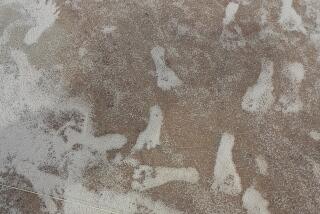Scientists Make First Discovery of American Indian Catacombs
- Share via
NEW ORLEANS — Three archeologists crept over rocky precipices, past dozing rattlesnakes and through sacred rooms deep in the wilds of Arizona to make the first discovery of American Indian catacombs.
The underground chambers, dating back up to 800 years, included tombs and graves in massive rooms measuring up to 100 feet long with 50-foot ceilings.
“It’s absolutely mind-numbing. We would have never believed it could have existed,” John W. Hohmann, one of the archeologists, said Friday during a meeting of the 2,000-member Society of American Archeology.
“It will change a lot of what we believed about Indians in the Southwest,” he said. “They may have been far more advanced than we believed.”
The scientist said he felt a bit like Indiana Jones, the movie archeologist-treasure hunter, when he lowered himself by rope down steep rock walls into the catacombs--armed with a flashlight and a pistol--passing rattlesnakes sunning themselves on rocky outcrops.
James Schoenwetter, an anthropology professor at Arizona State University in Tempe, Ariz., said the Indian catacombs are the first reported in the United States.
“The idea of a very elaborate form of ceremonial chamber being built underground hundreds of years ago is surprising,” he said.
“For American archeologists, it’s as exciting as finding the tomb of Tutankhamen,” said Gabe Decicco, a society spokesman.
The catacombs, explored last summer, were made from natural fissures excavated by the Indians about 700 to 800 years ago, Hohmann said.
“The amount of labor that went into it must have been incredible,” said Diane E. White, one of the discoverers.
The fissures, at an ancient Indian settlement about two miles west of Springerville, Ariz., near the New Mexico state line, had never before been explored.
More to Read
Sign up for Essential California
The most important California stories and recommendations in your inbox every morning.
You may occasionally receive promotional content from the Los Angeles Times.













